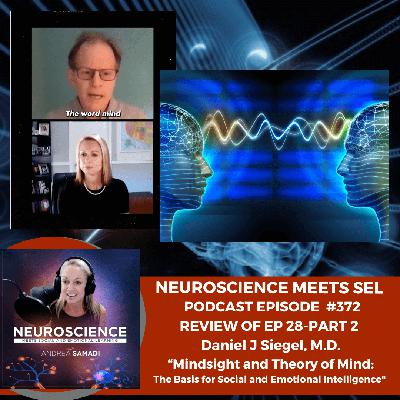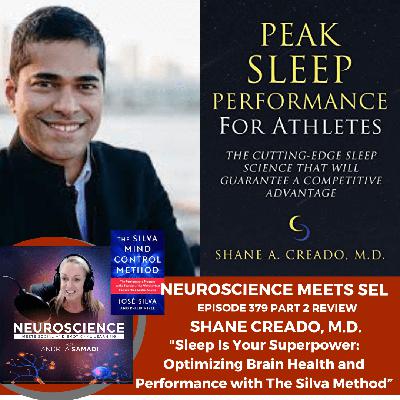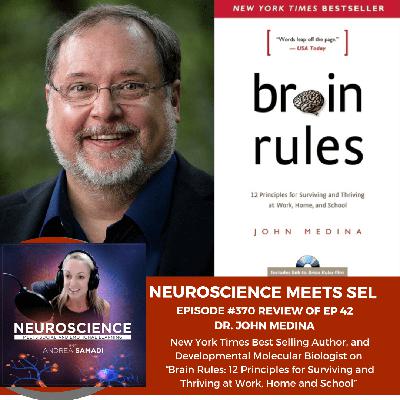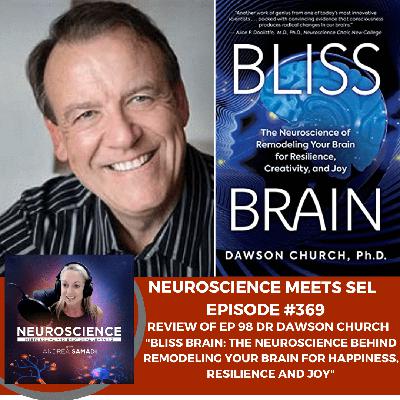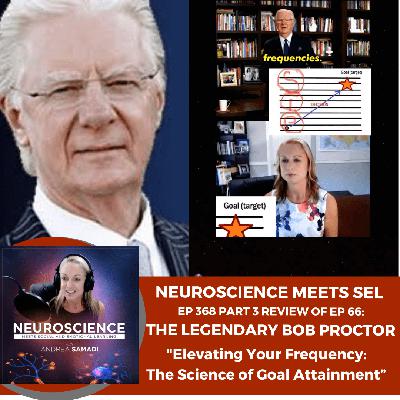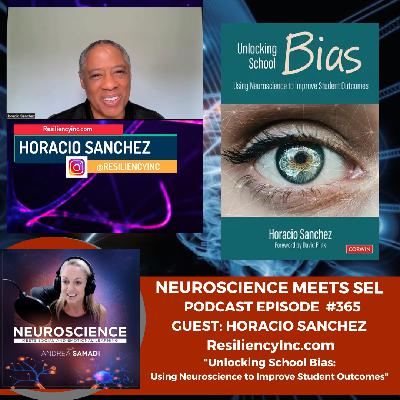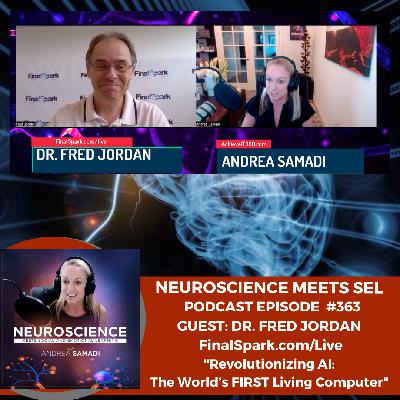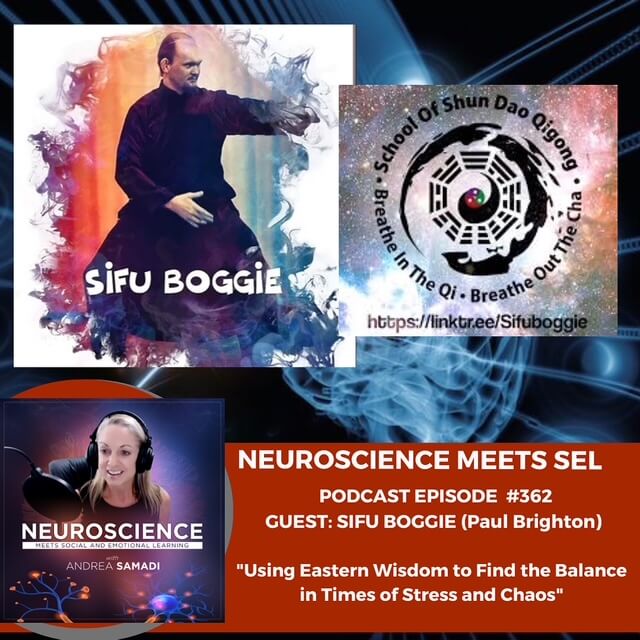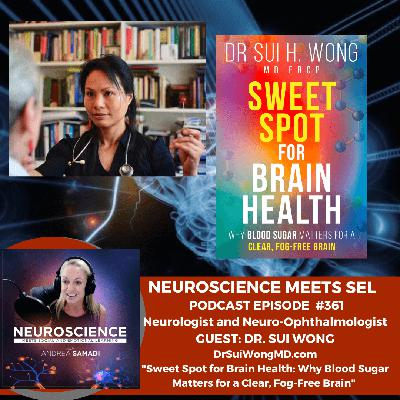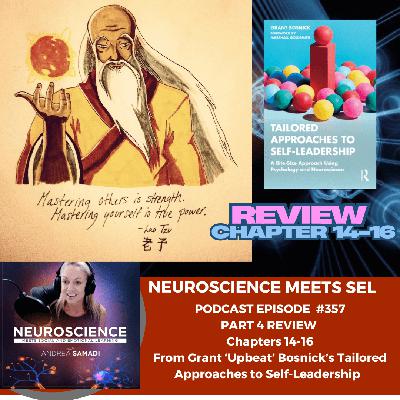Mindsight and Theory of Mind PART 2: Master Your Inner Lens with Dr. Dan Siegel
Description
In this episode review (Season 14, Ep. 372), Andrea revisits interviews with Dr. Dan Siegel to explore Mindsight—the focused attention that helps us see and reshape our own minds and connect with others. She breaks down how Mindsight underpins social and emotional intelligence and offers practical ways to develop it, including theory-of-mind practice, the Wheel of Awareness, and daily narrative reading.
This week, in our review of EP 28 with Daniel J. Siegel, MD and his book Mindsight, we learned:
✔ A deeper definition of Mindsight or seeing the mind in another
Mindsight, a term coined by Dr. Daniel J. Siegel, is the ability to perceive the mind within ourselves and others. It goes beyond simply observing behavior; it’s about sensing thoughts, feelings, intentions, and perspectives that aren’t immediately visible. This skill allows us to look beneath the surface of words and actions, to “see” the mind behind them, which leads to deeper empathy, better relationships, and stronger social intelligence.
✔ What is Theory of Mind and how can this skill help us to connect and understand others better
Theory of Mind (ToM) is closely related to Mindsight—it refers to our ability to attribute mental states (beliefs, desires, knowledge, intentions) to ourselves and to others. In simple terms, it’s recognizing that other people have thoughts and feelings that may be different from our own. This skill is essential for meaningful communication, conflict resolution, and collaboration, because it helps us predict how someone might react, understand why they feel a certain way, and respond with compassion rather than judgment.
✔ What is Theory of Mind and how can this skill help us to connect and understand others better
Theory of Mind (ToM) is closely related to Mindsight—it refers to our ability to attribute mental states (beliefs, desires, knowledge, intentions) to ourselves and to others. In simple terms, it’s recognizing that other people have thoughts and feelings that may be different from our own. This skill is essential for meaningful communication, conflict resolution, and collaboration, because it helps us predict how someone might react, understand why they feel a certain way, and respond with compassion rather than judgment.
✔ Practical tips to improve our Mindsight or Theory of Mind abilities
Pause and Reflect – Before reacting, ask yourself: What might this person be thinking or feeling right now?
Name Emotions – Practice labeling your own emotions and noticing them in others (“I feel frustrated” → “They might be anxious”).
Perspective-Taking Exercises – Put yourself in someone else’s shoes: If I were in their position, what would I be experiencing?
Read Fiction Regularly – Choose stories with complex characters and notice how your mind tracks their thoughts and motives.
Practice Curiosity in Conversations – Instead of assuming, ask open-ended questions to better understand another’s perspective.
Mindfulness Training – Strengthen your awareness of your inner world, which improves your ability to tune into the inner world of others.
The episode also emphasizes the importance of face-to-face relationships for learning and development, contrasts relational learning with screen-based approaches, and provides actionable tips educators and listeners can use to strengthen empathy, self-awareness, and relational skills.
Welcome back to SEASON 14 of The Neuroscience Meets Social and Emotional Learning Podcast, where we connect the science-based evidence behind social and emotional learning and emotional intelligence training for improved well-being, achievement, productivity and results—using what I saw as the missing link (since we weren’t taught this when we were growing up in school), the application of practical neuroscience.
I’m Andrea Samadi, and seven years ago, launched this podcast with a question I had never truly asked myself before: (and that is) If productivity and results matter to us—and they do now more than ever—how exactly are we using our brain to make them happen?
Most of us were never taught how to apply neuroscience to improve productivity, results, or well-being. About a decade ago, I became fascinated by the mind-brain-results connection—and how science can be applied to our everyday lives.
That’s why I’ve made it my mission to bring you the world’s top experts—so together, we can explore the intersection of science and social-emotional learning. We’ll break down complex ideas and turn them into practical strategies we can use every day for predictable, science-backed results.
Which brings up to today’s episode #372, where we will take Dr. Dan Siegel’s concept of Mindsight, to the next level. On our last EP 371 with Dan Siegel, PART 1 of our review of a very early interview EP 28[i], recorded in November 2019, we covered the importance of:
Understanding and Applying Mindsight which is “the way we focus our attention on the internal world. It’s how we bring consciousness to our own thoughts and feelings, and how we attune to the inner world of someone else. Mindsight gives us insight into ourselves, and empathy for others.”
Mindsight is a concept Dr. Siegel felt to be critical for us to develop noting this skill to be “the basis for social and emotional development.” He notes, that it’s a teachable set of skills that we can teach in school, and once mastered is a truly transformational tool. In his book, Mindsight he explains this concept further:
“Mindsight is a kind of focused attention that allows us to see the internal workings of our own minds. (and we’ve been talking about how important it is to go within, for true change in our lives to occur). It helps us to be aware of our mental processes without being swept away by them, (which) enables us to get ourselves off the autopilot of ingrained behaviors and habitual responses, and moves us beyond the reactive emotional loops we all have a tendency to get trapped in. It lets us “name and tame” the emotions we are experiencing, rather than being overwhelmed by them. Consider the difference between saying “I am sad” and “I feel sad.” Similar as those two statements may seem, there is actually a profound difference between them. “I am sad” is a kind of self-definition, and a very limiting one. “I feel sad” suggests the ability to recognize and acknowledge a feeling, without being consumed by it. The focusing skills that are part of mindsight make it possible to see what is inside, to accept it, and in the accepting to let it go, and, finally, to transform it into a NEW reality.
You can also think of mindsight as a very special lens that gives us the capacity to perceive the mind with greater clarity than ever before. This lens is something that virtually everyone can develop, and once we have it we can dive deeply into the mental sea inside, exploring our own inner lives and those of others. A uniquely human ability, mindsight allows us to examine closely, in detail and in depth, the processes by which we think, feel, and behave. And it allows us to reshape and redirect our inner experiences so that we have more freedom of choice in our everyday actions, (giving us) more power to create the future, to become the author of our own story. Another way to put it is that mindsight is the basic skill that underlies everything we mean when we speak of having social and emotional intelligence.” (Dr. Daniel J Siegel, Mindsight, Location 105, Kindle Edition).
💡 Key Takeaways About Mindsight from Daniel J Siegel
Definition of Mindsight: Focused attention that helps us perceive the internal workings of our mind. Last week in PART 1[ii] of our review of Dr. Siegel, we looked at Mindsight as “the way we focus our attention on the internal world. It’s how we bring consciousness to our own thoughts and feelings, and then, how we attune to the inner world of someone else.”
Benefits:
Mindsight helps us to step out of autopilot and habitual emotional reactions.
Encourages us to “name and tame” emotions instead of being consumed by them.
Example: “I am sad” (self-definition) vs. “I feel sad” (acknowledgement without identity attachment).
Creates clarity, self-awareness, and the ability to transform our thoughts, feelings and actions…which is why we can become the author of our own story. When we can do this, we can change our RESULTS and outer world.
REMINDER: If we don’t like what’s happening in our external world—whether it’s in our job, relationships, results, or any area of life—we must first look inward. Our circumstances mirror the beliefs and thoughts we hold within.
Once we can master Mindsight (our inner world), we can with certainty watch our outer world transform.
This is a concept that Bob Proctor would teach in his seminars. He just labelled the terminology differently, but to me, this is where science connects to some of these age-old success principles that I watched transform the lives of thousands of people, when I worked with Proctor in the motivational speaking industry.
Mindsight as a Lens:
Helps us look inward with depth and precision.
Allows reshaping and redirecting inner experiences → more freedom and choice.
Empowers us to be the author of our own life story.
Serves as the foundation of social and emotional intelligence.
It allows us to be the Captain of our own ship, giving us the ability to make changes within, which creates change in our external world.
Key Points from Video Clip with Dr. Siegel
Without Mindsight tools, we cannot develop true s

